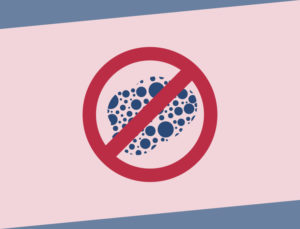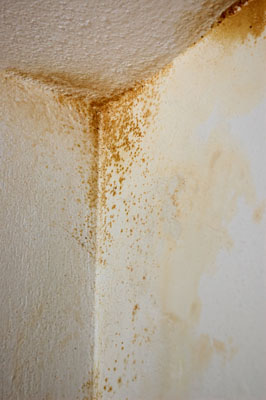Prevent mold and fungus by choosing pre-fabricated metal buildings.
Mold is a fungus that thrives on two things: moisture and organic material. It breeds and spreads, filling the air you breathe with its insidious spores.
Mold infiltrates a building so covertly. You don’t know mold is in a building until you suddenly spot “something” in that corner, or you notice a musty, earthy, odor like rotting leaves.
Your eyes and nose are usually the first to pick up on the presence of a mold invasion. It may appear as stained places on walls, ceilings, floors, or baseboards. Your first whiff may be a vague odor that gives you flashbacks to your old gym locker.
appear as stained places on walls, ceilings, floors, or baseboards. Your first whiff may be a vague odor that gives you flashbacks to your old gym locker.
Mold penetrates a building as a spore hitching a ride on you or others— items you bring inside, wafting in through open doors, windows, air conditioning and heating systems, or tagging along on your pets.
If it doesn’t find moisture, mold won’t be a problem. But if there is the slightest leak under the sink or washing machine, condensation on the windows, or high humidity, the spore starts to sprout, spread, and destroy. (See our previous articles on waterproofing and condensation in steel buildings.)
Many molds thrive at average indoor temperatures, but cannot survive below 40 degrees or above 100 degrees Fahrenheit.
Can mold grow on metal? Wood buildings promote mold; steel buildings don’t. Mold actually feeds on any organic material, as long as moisture and oxygen are present. That’s one advantage of building with steel rather than wood: steel is inorganic. Mold cannot feed on steel. Wood is organic, and therefore a perfect food supply for mold and fungus.
When mold spores land on a damp area, they start to grow and spread, feeding on the substance they are on for nutrients. If the moisture source is undetected or ignored, the mold will continue to spread, digesting the wood, paper, carpet, insulation or any other organic material it can use for sustenance.
Eventually mold destroys anything it grows on.
 The Environmental Protective Agency (EPA) reports that 33%-50% of all structures have moisture-laden conditions ripe for supporting mold, bacteria, or other indoor biological pollutants.
The Environmental Protective Agency (EPA) reports that 33%-50% of all structures have moisture-laden conditions ripe for supporting mold, bacteria, or other indoor biological pollutants.
There are estimated to be over 100,000 different types of mold. Mold is literally as old as the planet itself. However, identifying the type of mold in your building is unimportant. Just get rid of it and fix the moisture problem that enabled it grow to prevent a reoccurrence.
One of the best ways to avoid mold problems is reduce the likelihood of mold before you build. For example, consider the framing material.
Wood is organic, so it actually encourages mold once it starts.
Wood is literally digested by mold. There are high concentrations of mold wherever organic materials are decomposing.
Mold is what decomposes dead trees in the forest, rotting them and returning them the natural compost of the forest floor. That’s great for a forest’s ecosystem, but not so good when it’s your wood building’s frame systematically decaying and rotting.
Molding wood can lead to rot in a wood structure. I spreads throughout the wood fiber of the framing, weakening the structural integrity of the building.
Steel is inorganic, so metal buildings do not support fungus, mold, mildew, or any other microorganisms.
So can mold grow on metal buildings? The short answer is no. Steel framing helps prevent mold in three ways.
First of all, the framing itself is inorganic, so mold can’t feed on steel like it does lumber.
Secondly, steel doesn’t hold moisture like wood does, so mold is less likely to occur.
Thirdly, a pre-engineered metal building is built straight and tight— and it stays that way over time.
Wood-framing shifts, sags, and warps in what builders call “creep,” as the individual studs all twist, expand, and contract with changing moisture content. That causes nails to work out, so the whole frame loosens up over time. Cracks and crevices in the framing envelope develop. Windows and doors no longer shut properly, allowing outside moisture (and mold spores) to penetrate the building envelope more easily.
But steel framing does not change, creep, warp, or sag, because steel is inorganic and unaffected by moisture. All steel framing connections are bolts and screws that won’t work out like nails.
RHINO prefab metal building warehouseA properly insulated metal building not only is energy efficient, but built tight to stay tight. And since steel-framing creates deeper exterior walls than ordinary 2×4 wood framing, the use of thicker, more energy efficient insulations is possible. With RHINO’s Pro-Value insulation packages, energy bills may be 50% lower.
The fiberglass in the batt insulation used by the RHINO steel building systems is also inorganic, so it will not promote mold and fungus growth, either.
Preplan ways to bring fresh air in and vent moisture-laden mold-supporting air out of metal buildings.
As builders and consumers became more energy-conscious in the 1970s-1990s, many buildings were built more air-tight, but without proper ventilation to control moisture and indoor pollutants. The more air-tight the construction, the less air exchange there is with fresh outside air— including moisture. Without proper ventilation, that dampness remains in the house or structure far too long.
Make sure your new structure has plenty of ventilation and exhausts. RHINO offers endwall and ridge vents as options on all out structures.
Don’t use carpeting in areas where plumbing leaks are likely to occur, like baths and laundry rooms.
Carpeting applied directly to a concrete slab can absorb moisture and become a breeding ground for biological pollutants like mold, so install a vapor barrier and a subfloor before carpeting is put in place. Or decorate with area rugs that can be picked up and laundered regularly instead of carpeting.
Mold loves sheetrock. The paper facing of the gypsum board is, of course, manufactured from wood. It is predigested wood so very easy for the mold to feed upon. As long as the gypsum board stays dry, this is not a problem. Play it safe and don’t use sheetrock in shower and tub areas.
The World Health Organization (WHO) said in a report on proposing guidelines for indoor air quality: “Well-designed, well-constructed, well-maintained building envelopes are critical to the prevention and control of excess moisture and microbial growth…”
Mold-induced health issues
Most people seem to tolerate moderate levels of mold without much difficulty, but all molds could potentially cause adverse health problems. It is especially harmful for those most vulnerable and sensitive because of allergies, asthma, or other existing lung or immune system diseases. These people can become very ill from being exposed to even small levels of mold.
Epidemiological studies show that people who live or work in buildings with high levels of moisture seem to have above average overall health issues— especially respiratory problems. More studies need to be conducted to conclusively verify mold is the culprit, but it seems a likely conclusion.
Avoid asthma-promoting mold with RHINO metal buildings
The EPA believes these pollutants can cause allergic reactions, including asthma attacks. People sensitive to molds, those with chronic breathing difficulties, or people with compromised immune systems are at the highest risk. Those already dealing with chronic lung problems or weakened immunity may even contract dangerous mold-induced lung infections.
An estimated 5% of Americans who have mold allergies may experience severe reactions to mold exposure.
Several things can trigger an asthma attack indoors. Mold is one of them.
There are 36 million Americans suffering from allergy problems. Today 24.6 million in the U.S. have asthma, accounting for 8.2% of the population. The Asthma and Allergy Foundation of America says 44,000 people have an asthma attack every day.
Worldwide it is estimated there are 300 million people afflicted with asthma and about 70% of those asthmatics also suffer with allergies.
The Centers for Disease Control and Prevention (CDC) says asthma is the most common chronic illness in children today. Asthma ranks third as the reason for kids under 15 being hospitalized.
Strangely, asthma is on the rise in spite an improvement in pollution levels and decreases in smoking and secondhand smoke. The CDC is baffled by the rise. The greatest increase in asthma rates was among African-American children, 17% of whom now have asthma.
People who are exposed to high levels of mold for a long time can develop lung hypersensitivity, leading to permanent lung scarring. Some recover when the mold is removed. However, if the damage is severe enough, they may never fully recover.
Control the moisture, control the mold
Excessive moisture breeds mold and other microorganisms. You must control the moisture in the building.
Unchecked, mold can serious structural damage to a building, and most insurance will not cover mold damage.
Mold grows exponentially at 70% humidity or above. The World Health Organization (WHO) recommends reducing indoor humidity to 40%- 60%. Buy an inexpensive hygrometer (moisture meter) and take readings throughout the building or home to pinpoint problem areas.
Once mold has invaded, the best remedy is to clean up the mold and reduce the moisture.
If your building has been exposed to hurricane, tornado, or flood damage, you are almost certainly facing a severe mold problem. If the structure has been closed up for several days after a storm-induced natural disaster, just assume there is already mold growing somewhere inside any wood-framed structure.
You can’t just kill the mold, you have to remove it. Dead mold can still cause allergic reactions.
Wear protective goggles, non-porous gloves and a well-sealed filtered mask while cleaning mold. If the area is bigger than 10 square feet, or if you have mold sensitivity or respiratory problems like asthma, don’t try to clean it yourself. Call a professional.
Any organic material that’s been wet for more than 48 hours and cannot be thoroughly cleaned— wood, carpet, drywall, ceiling tiles, insulation, paper, and other absorbent materials—will need to be discarded. Don’t take chances with mold and bacteria. The EPA’s best advice is: When in doubt, throw it out!
Eradicate mold as you would a weed— get to the root problem and eliminate the water problem that caused the mold in the first place.
Mold-resistance is just one of the reasons prefabricated metal buildings are a better way to build:
The inorganic nature of steel makes it termite-resistant, too.
- Since steel is non-combustible, it doesn’t burn nor does it provide fuel to a building fire.
- A well-grounded steel building is much less likely to be damaged by lightning.
- The intrinsic strength of steel makes it less likely to be damaged by high winds and earthquakes.
- Metal buildings start out arrow-straight and stay that way over the years.
- Since steel is recycled more than any other material, it is also a “green” mold-resistant material.
- Pre-engineered metal buildings are simpler to erect and produce very little waste.
- Reduce your risk of costly structural damage from mold, as well as your chances of health-related issues induced by mold exposure. Make your next structure a mold-resistant, energy-efficient RHINO metal building.
